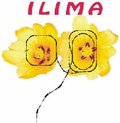ILIMA - Isomeric Beams, LIfetimes and MAsses

The ILIMA experimental program is based on the combination of the in-flight separator Super-FRS and a system of storage rings CR-RESR-NESR. The Super-FRS will be an ideal tool to provide short-lived nuclides of all elements for precise mass and half-life measurements in the new storage rings. Unique investigations of decay modes and half-lives of stored bare and highly charged nuclides are possible. Another important feature of the new facility will be the access to pure isomeric beams.
Two methods have been developed at GSI for accurate mass measurements of stored exotic nuclei: ‘Schottky Mass Spectrometry (SMS)’ for electron-cooled beams of longer-lived isotopes, and ‘Isochronous Mass Spectrometry (IMS)’for short-lived fragments. Both methods, well established in previous experiments, are based on precise measurements of the revolution frequency which unambiguously characterizes the mass-to-charge ratio of the circulating ions, either with Schottky pickups (SMS) or with time-of-flight detectors inside an isochronically tuned storage ring (IMS). A great advantage of both SMS and IMS is that the mass of a single ion circulating in the ring can be measured, see figure above. These two experimental methods are especially well-suited to measure effectively a large part of the mass surface in one run. In this way the systematic errors can be kept small if the reference masses for the calibration are reliable.
The lifetimes of stored nuclei can be obtained with two independent methods. The first one is to measure directly the intensity changes of the stored ion beams. The second is based on the fact that daughter and mother nuclides differ by their mass-to-charge ratio. Then the resulting daughter nuclei can be recorded with particle detectors placed near the orbit of mother nuclides. Both methods yield redundant information by simultaneous measurement of the decay of mother and the population of daughter nuclides.
Today the challenge is to measure the masses and the lifetimes of exotic nuclides up to the limits of nuclear existence. In this way the location of the drip-lines can be experimentally determined and the new properties of very exotic nuclides can be investigated for the first time.
Nuclei in isomeric states were already observed throughout the campaign for mass and life-time measurements with the present FRS-ESR facility. Depending on the half-life and excitation energy of isomeric states a pure isomeric beam can be prepared. The existing FRS-ESR facilities are used to develop the experimental methods proposed for ILIMA.

